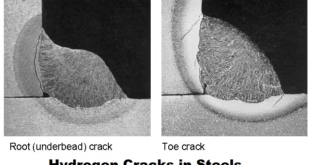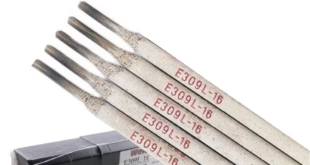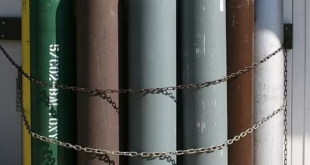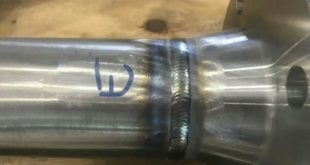Different Types of Welding and What They Are Used For
Welding is a critical process in various industries, used to join materials, primarily metals, by applying heat, pressure, or both. This versatile technique is vital in the construction of buildings, infrastructure, vehicles, machinery, and much more. While the basic principle of welding—joining materials—is consistent, there are numerous types of welding, each with its own method, applications, and advantages. This article explores the different types of welding and their uses, providing a comprehensive guide to the diverse world of welding technologies.
Types of Welding And Their Uses
- MIG Welding (Gas Metal Arc Welding – GMAW)
- TIG Welding (Gas Tungsten Arc Welding – GTAW)
- Stick Welding (Shielded Metal Arc Welding – SMAW)
- Flux-Cored Arc Welding (FCAW)
- Submerged Arc Welding (SAW)
- Electron Beam Welding (EBW)
- Resistance Welding (RW)
- Laser Beam Welding (LBW)
- Plasma Arc Welding (PAW)
- Ultrasonic Welding
- Spot Welding
- Thermit Welding
- Explosion Welding

Types of Welding And Their Uses
- 1. Shielded Metal Arc Welding (SMAW)
- Also Known As: Stick Welding
- Overview: Shielded Metal Arc Welding (SMAW), often referred to as stick welding, is one of the oldest and most widely used welding processes. It involves the use of a consumable electrode coated in flux to lay the weld. An electric current is passed through the electrode, creating an arc between the electrode and the metals to be joined. The flux coating on the electrode disintegrates, producing vapors that shield the weld area from atmospheric contamination.
- Uses:
- Construction: SMAW is commonly used for building structures, including bridges, buildings, and other large metal structures.
- Repairs: Due to its versatility and portability, SMAW is frequently used for repairing equipment and machinery in industrial settings.
- Heavy Steel Fabrication: The process is effective for welding thicker materials, especially in structural steel applications.
- Advantages:
- Portable and easy to use in various environments.
- Suitable for outdoor applications, even in windy conditions.
- No external shielding gas required.
- Limitations:
- Produces slag that must be chipped away after welding.
- Can be slower than other methods like MIG or TIG welding.
- 2. Gas Metal Arc Welding (GMAW)
- Also Known As: Metal Inert Gas (MIG) Welding
- Overview: GMAW, commonly known as MIG welding, uses a continuously fed wire electrode and a shielding gas to protect the weld pool from contamination. This process is semi-automated, making it faster than SMAW and suitable for high-production environments. The welding machine provides a constant voltage, and the welder only needs to control the direction and speed of the welding torch.
- Uses:
- Automotive Industry: MIG welding is widely used in the automotive industry for both manufacturing and repairs, thanks to its ability to weld thin metals efficiently.
- Manufacturing: In high-production environments like assembly lines, MIG welding is preferred due to its speed and ease of automation.
- Home Projects: Hobbyists and DIY enthusiasts often use MIG welding because of its simplicity.
- Advantages:
- Faster than stick welding.
- Produces clean, slag-free welds.
- Easier to learn, making it suitable for beginners.
- Limitations:
- Requires an external shielding gas, making it less suitable for outdoor work.
- The equipment can be more expensive compared to stick welding.
- 3. Gas Tungsten Arc Welding (GTAW)
- Also Known As: Tungsten Inert Gas (TIG) Welding
- Overview: TIG welding uses a non-consumable tungsten electrode to produce the weld. A shielding gas (usually argon) is used to protect the weld from contamination, and a separate filler metal may be added to the weld pool. TIG welding is known for its precision and the high-quality welds it produces, making it ideal for critical and intricate welding tasks.
- Uses:
- Aerospace Industry: TIG welding is used in aerospace applications where precision and weld quality are paramount.
- Automotive Industry: It’s often used for welding stainless steel and aluminum components.
- Artistic Welding: Sculptors and artists use TIG welding due to its ability to weld thin materials with precision.
- Advantages:
- Provides superior weld quality with minimal spatter.
- Allows for precise control, making it ideal for delicate work.
- Suitable for a wide range of metals, including aluminum, titanium, and stainless steel.
- Limitations:
- Slower and more challenging to master than other welding processes.
- Requires external shielding gas, making it less portable.
- 4. Flux-Cored Arc Welding (FCAW)
- Overview: Flux-Cored Arc Welding (FCAW) is similar to MIG welding but uses a flux-cored wire that provides its own shielding. This process can be used with or without an external shielding gas, depending on the application. FCAW is known for its high deposition rate, making it suitable for heavy-duty applications.
- Uses:
- Construction: FCAW is widely used in the construction industry, especially for building bridges and heavy steel structures.
- Shipbuilding: The process is often used in shipbuilding due to its ability to weld thick materials quickly.
- Industrial Fabrication: FCAW is commonly used in manufacturing large equipment and machinery.
- Advantages:
- High deposition rates lead to faster welding.
- Can be used in outdoor environments with self-shielding wires.
- Capable of welding thicker materials.
- Limitations:
- Produces more spatter than MIG or TIG welding.
- Requires a more complex setup than SMAW.
- 5. Submerged Arc Welding (SAW)
- Overview: Submerged Arc Welding (SAW) involves the formation of an arc between a continuously fed electrode and the workpiece. The weld zone is submerged under a blanket of granular flux, which protects the molten weld from atmospheric contamination and stabilizes the arc. This process is typically automated and is known for its high efficiency and deep penetration.
- Uses:
- Heavy Manufacturing: SAW is commonly used in the manufacturing of heavy equipment, such as pressure vessels and large pipes.
- Shipbuilding: The process is also used in the construction of ships, where long, straight welds are required.
- Structural Welding: SAW is used in the construction of large steel structures, such as bridges and towers.
- Advantages:
- High deposition rates and deep penetration.
- The submerged flux prevents spatter and improves weld quality.
- Suitable for thick materials.
- Limitations:
- Limited to flat or horizontal positions due to the nature of the flux.
- Requires specialized equipment and is not suitable for small or intricate jobs.
- 6. Oxy-Acetylene Welding (OAW)
- Also Known As: Gas Welding
- Overview: Oxy-Acetylene Welding (OAW) uses a mixture of oxygen and acetylene gas to produce a flame hot enough to melt and fuse metals. Although not as common today in industrial applications, OAW is still used for specific tasks and by hobbyists. The process can also be used for cutting metals.
- Uses:
- Repairs: OAW is commonly used for repairing metal parts, particularly in automotive and agricultural applications.
- Artistic Welding: Artists and metal sculptors often use OAW for its versatility and control over the weld pool.
- Brazing: The process is also used for brazing, a technique that joins metals without melting the base materials.
- Advantages:
- Does not require electricity, making it portable.
- Can be used for both welding and cutting.
- Suitable for a wide range of metals.
- Limitations:
- Slower than other welding processes.
- Requires careful handling of flammable gases.
- 7. Electron Beam Welding (EBW)
- Overview: Electron Beam Welding (EBW) uses a beam of high-velocity electrons to melt and join materials. This process takes place in a vacuum to prevent the electrons from scattering, allowing for precise, deep welds. EBW is typically used in specialized applications where high precision is required.
- Uses:
- Aerospace: EBW is used in aerospace for welding high-performance components, such as turbine blades and rocket parts.
- Nuclear Industry: The process is used to weld components in nuclear reactors, where precision and strength are critical.
- Medical Devices: EBW is used in the production of medical implants and instruments.
- Advantages:
- Can produce extremely deep and narrow welds.
- Suitable for hard-to-weld materials like titanium.
- Provides excellent control over the weld.
- Limitations:
- Requires expensive equipment and a vacuum environment.
- Limited to high-value, specialized applications.
- 8. Laser Beam Welding (LBW)
- Overview: Laser Beam Welding (LBW) uses a high-intensity laser beam to melt and fuse materials. This process is highly precise and is often used in automation, especially in industries that require small, detailed welds. LBW is commonly employed in the electronics and automotive industries.
- Uses:
- Electronics: LBW is used in the electronics industry to weld small components, such as circuit boards.
- Automotive: The process is also used in automotive manufacturing for welding car bodies and engine components.
- Jewelry: LBW is used in jewelry making for delicate and precise welds.
- Advantages:
- Provides very precise welds with minimal heat input.
- Suitable for a wide range of materials.
- Can be easily automated for high-production environments.
Limitations:
- The equipment required for LBW is expensive, making it less accessible for smaller operations.
- High precision and minimal heat input may not be suitable for thicker materials or applications requiring deep penetration.
9. Plasma Arc Welding (PAW)
Overview: Plasma Arc Welding (PAW) is a process similar to TIG welding, but it uses a plasma arc instead of a regular arc. The plasma is created by forcing a gas through a small nozzle at high velocity and then ionizing it, creating an intense, focused arc. This method is highly precise and can be used for both thin and thick materials.
Uses:
- Aerospace and Aircraft Manufacturing: PAW is often used in aerospace applications where high precision and superior weld quality are required.
- Electronics: It’s employed for small-scale electronic components due to its precision and control over the weld.
- Nuclear and Chemical Industry: PAW is used to weld components in the nuclear and chemical industries because of its ability to handle exotic and corrosion-resistant materials.
Advantages:
- Offers better arc control than TIG welding, with high precision and stable arcs.
- Can be used for high-quality welds in both thin and thick materials.
- Faster than TIG welding for certain applications.
Limitations:
- More complex and expensive than other welding techniques.
- Requires skilled operators and is less forgiving for beginners.
10. Ultrasonic Welding
Overview: Ultrasonic welding uses high-frequency ultrasonic vibrations to weld materials, particularly plastics and some metals. This technique doesn’t involve heat in the conventional sense but rather uses mechanical vibrations to create friction, which generates heat at the molecular level, causing the materials to bond.
Uses:
- Plastic Welding: Ultrasonic welding is widely used for joining plastic parts, such as in packaging, electronics, and automotive components.
- Medical Devices: It’s used to produce medical instruments and packaging, especially for sterile and disposable products.
- Electronics: Ultrasonic welding is often used in creating small electronic components and circuits.
Advantages:
- Fast and efficient, making it suitable for high-volume production.
- Does not require external heat sources, so there is no risk of material warping or distortion.
- Precise and ideal for welding delicate materials.
Limitations:
- Primarily limited to smaller components and thin materials.
- Equipment can be costly, and it’s not suitable for all types of materials, especially thicker metals.
11. s
Overview: Spot welding is a form of resistance welding where two or more metal sheets are joined by applying pressure and passing a current through the contact point of the metals. This localized heating causes the metals to fuse at the specific spot where the electrodes apply pressure.
Uses:
- Automotive Manufacturing: Spot welding is extensively used in car manufacturing, particularly for welding the body and frame where overlapping metal sheets are common.
- Sheet Metal Fabrication: It’s also employed in industries where sheet metals are joined, such as in household appliances and furniture manufacturing.
Advantages:
- Quick and efficient for welding thin sheets of metal.
- High automation potential, making it ideal for mass production.
- Minimal heat input to surrounding areas, reducing warping.
Limitations:
- Limited to specific types of metals and sheet thicknesses.
- Not suitable for welding thicker materials or components with complex geometries.
12. Thermit Welding
Overview: Thermit welding is a fusion process that uses a chemical reaction between aluminum powder and iron oxide to produce intense heat. This heat is sufficient to melt steel, allowing the joining of metal components. The process is primarily used in rail track welding and other heavy-duty applications.
Uses:
- Railway Construction: Thermit welding is widely used in joining railway tracks.
- Pipeline and Heavy Equipment: It’s also used for repairing or welding large machinery and pipelines that require strong, durable welds.
Advantages:
- Produces extremely strong and durable welds.
- Suitable for large, heavy components where other welding processes might be impractical.
- No external power source required, making it useful in remote locations.
Limitations:
- The process is slow and not suitable for high-production environments.
- Requires careful handling of the chemical reactants involved in the thermit reaction.
13. Explosion Welding
Overview: Explosion welding is a solid-state welding process that uses explosive energy to bond two dissimilar metals together. The explosion causes the metals to collide at extremely high velocities, resulting in a metallurgical bond without melting the materials.
Uses:
- Cladding: It’s commonly used in the production of clad metals, where a corrosion-resistant material is bonded to a structural metal.
- Marine and Chemical Industries: Explosion welding is used to join metals that need to withstand corrosive environments, such as in the marine and chemical processing industries.
Advantages:
- Capable of joining dissimilar metals that would be difficult to weld using traditional methods.
- Produces high-strength, corrosion-resistant joints.
- No melting means there are no heat-affected zones, preserving the integrity of the metals.
Limitations:
- Limited to specific applications, especially large-scale industrial work.
- Requires controlled environments due to the use of explosives.
14. Forge Welding
Overview: Forge welding is one of the oldest welding processes, dating back to ancient blacksmithing techniques. In forge welding, two pieces of metal are heated until they’re soft and then hammered together to form a bond. It’s a solid-state welding process, meaning the metals do not melt but are instead fused through pressure.
Uses:
- Blacksmithing: Forge welding is still used in traditional blacksmithing to create tools, weapons, and decorative items.
- Specialty Applications: In modern times, it’s used for specialty applications where traditional techniques are valued for their craftsmanship.
Advantages:
- Can produce very strong bonds.
- Does not require high-tech equipment, making it accessible for artisans and traditional craftsmen.
- Can be used to join a variety of materials.
Limitations:
- Requires significant skill and experience.
- Time-consuming and labor-intensive compared to modern welding techniques.
Conclusion
Welding is an essential process in many industries, from automotive manufacturing and aerospace to construction and artistic metalwork. Each type of welding method offers unique advantages and is suitable for specific applications. Whether it’s the high precision of TIG welding for delicate work, the efficiency of MIG welding in mass production, or the specialized applications of processes like explosion or thermit welding, understanding the various welding techniques allows professionals to select the best method for their needs. Mastering the different types of welding ensures that fabricators can meet the diverse challenges presented in modern manufacturing, construction, and beyond.
 Welding of Welders All about Welding and Welders
Welding of Welders All about Welding and Welders




